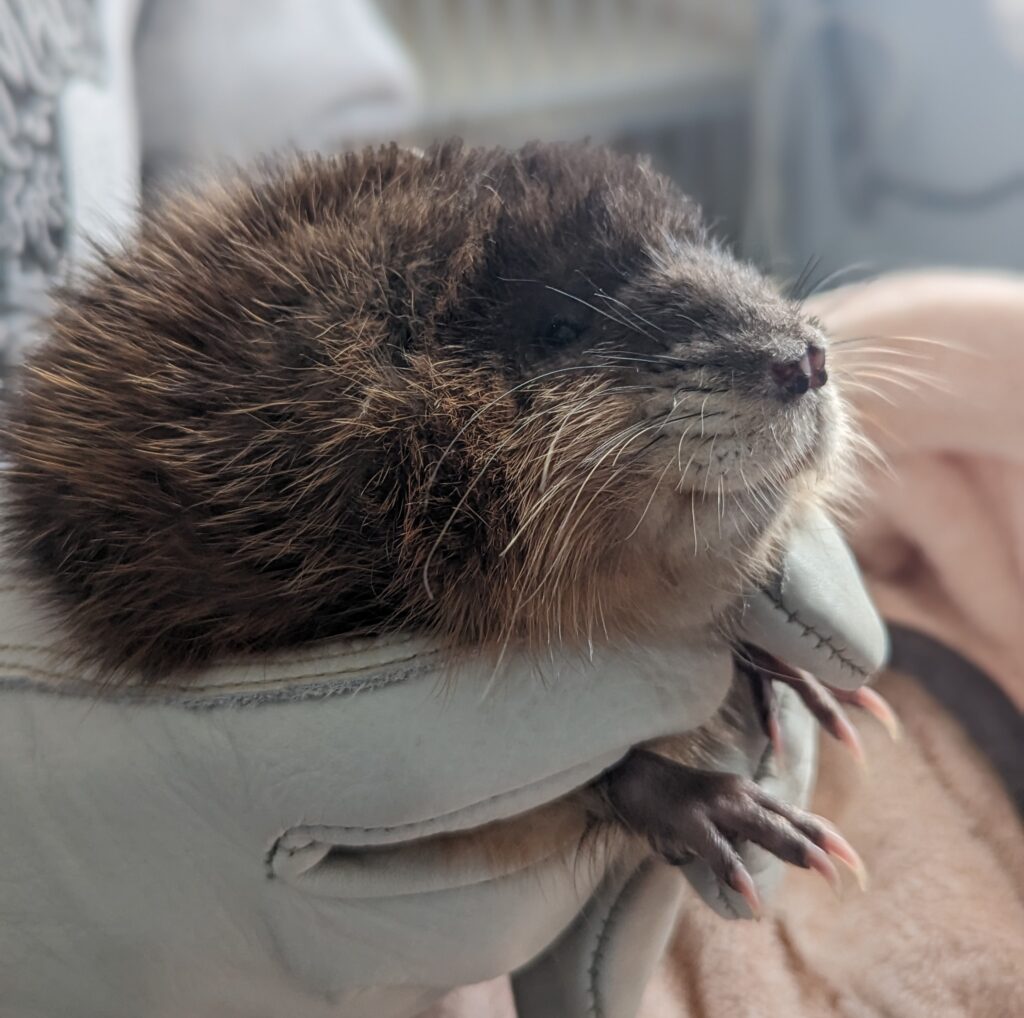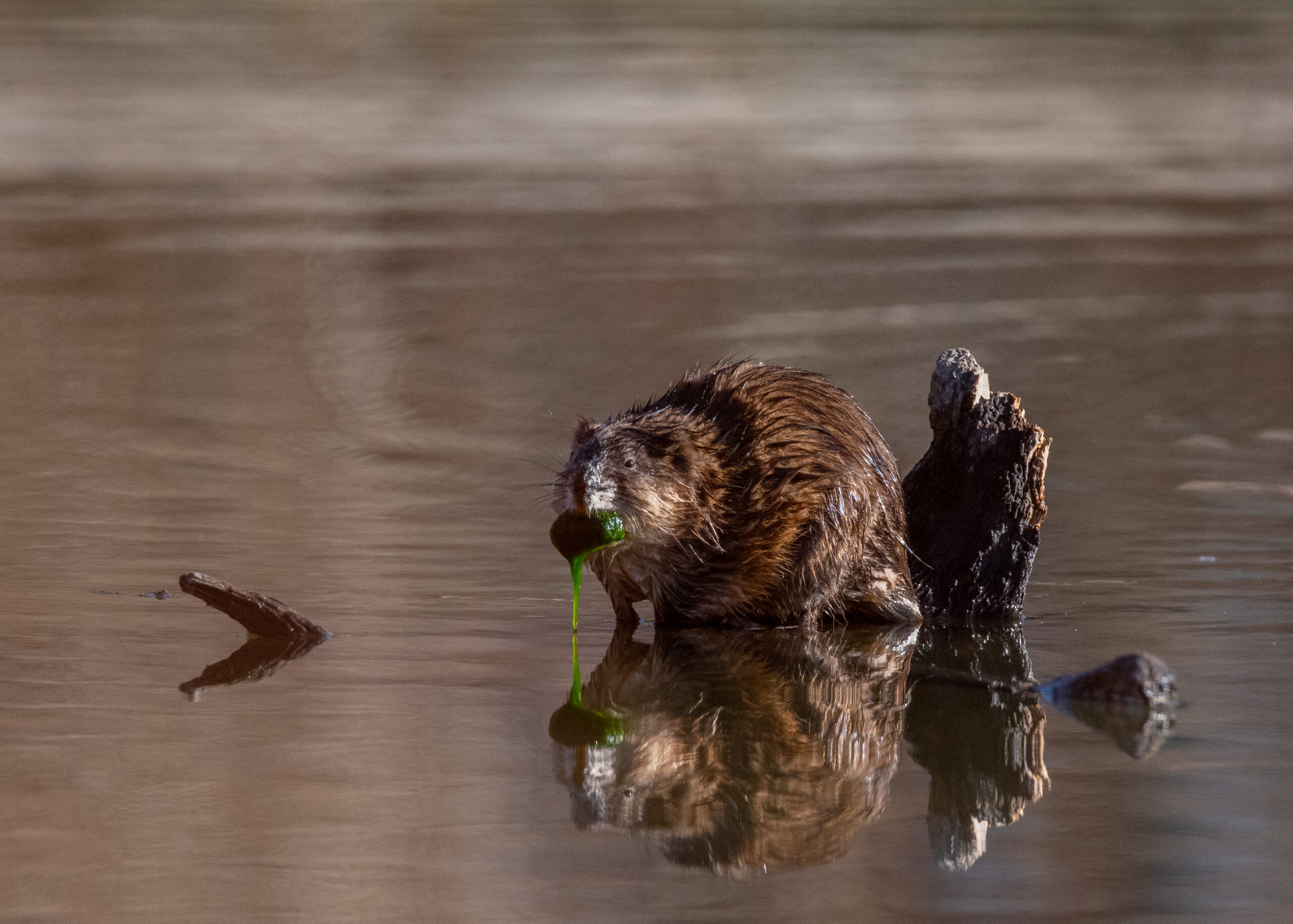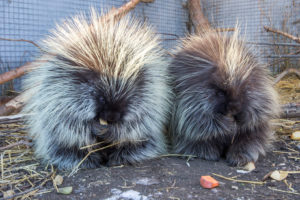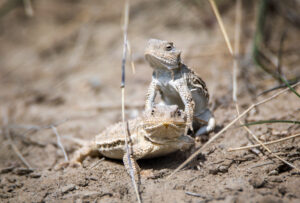by Katie Grant
Muskrats, often mistaken for their larger counterparts, beavers, are fascinating semi-aquatic rodents that play a crucial role in North America’s wetland ecosystems. We will explore their unique characteristics, behaviours, and ecological significance while shedding light on their evolutionary history, reproductive processes, and the challenges they face in the modern world.
Resembling large rats, muskrats boast a round physique with short legs and nearly invisible ears. They weigh 0.7–1.8 kilograms, and measure 40–63 centimeters in length, with an additional 18–28 centimetres contributed by their tails.2 Their dense, water-repellent brown fur provides insulation, allowing them to swim and dive for extended periods. With partially webbed hind feet and sharp-clawed front feet, muskrats efficiently navigate wetland environments, digging into the banks of rivers and streams. Their stocky cylindrical body, short legs, and scaly tail allow this semi-aquatic rodent to adapt perfectly to its habitat.3 Their long whiskers help them detect vibrations in the water while searching for food.4
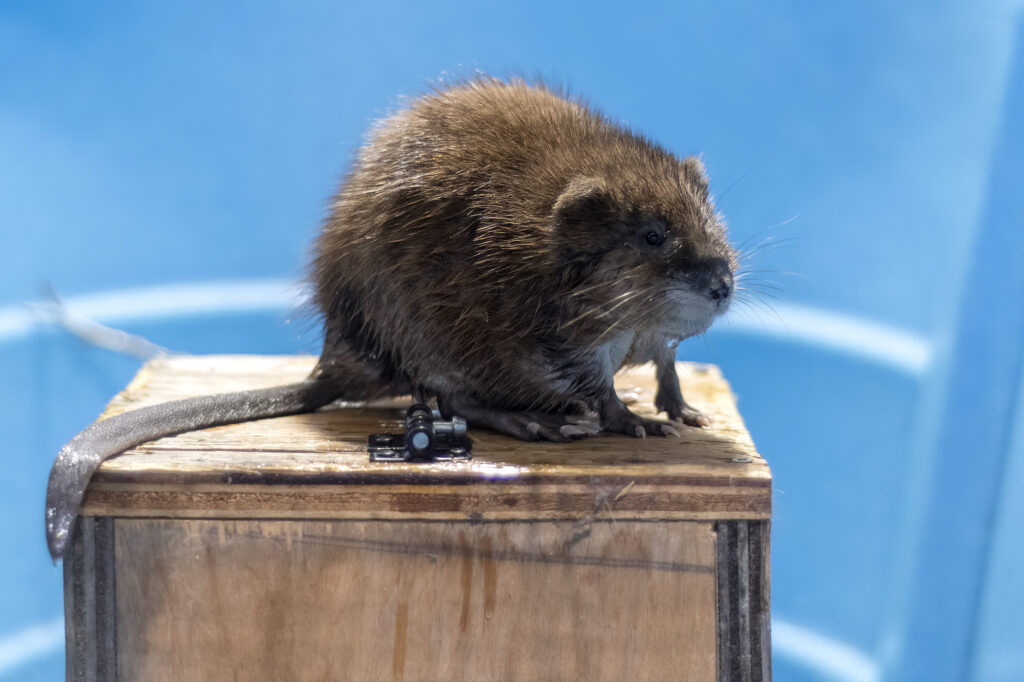
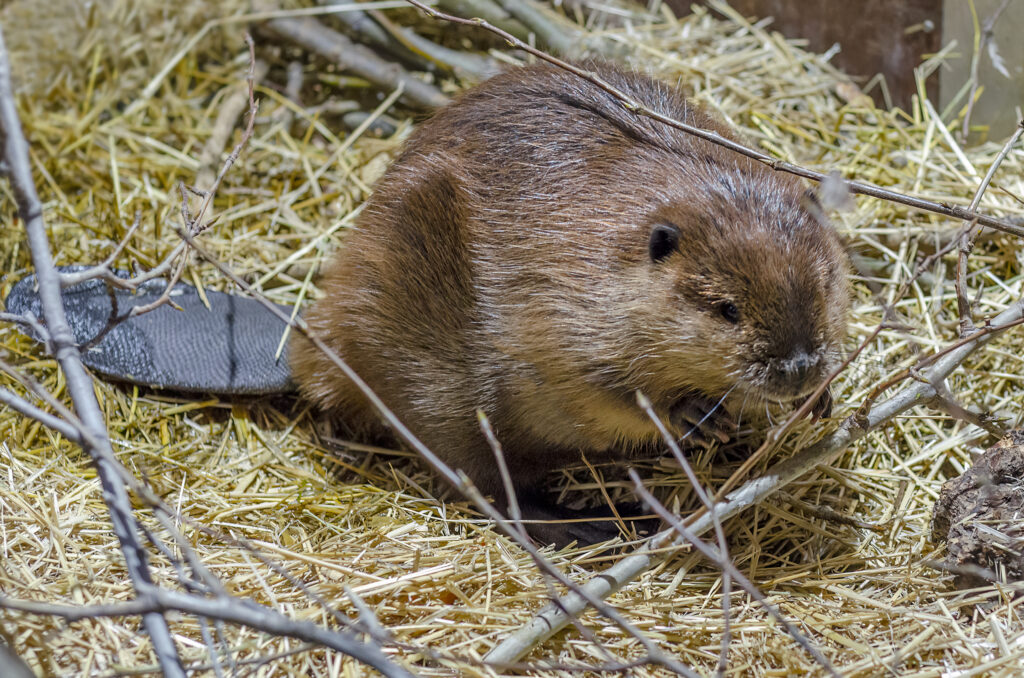
Muskrats are frequently confused with beavers due to their similar brown, furry appearance and excellent swimming abilities. Both species inhabit the same watery habitats, diligently foraging for underwater and shoreline flora. Despite their visual similarities and shared rodent classification, muskrats and beavers are only distantly related. Muskrats’ closest relatives include voles and lemmings. Distinguishing between a muskrat and a beaver can be done by assessing their size and tail characteristics. A muskrat is significantly smaller than a 20 kilogram beaver, and a muskrat possesses a thin, vertically flattened tail in contrast to the beaver’s broad, horizontally flattened tail.1
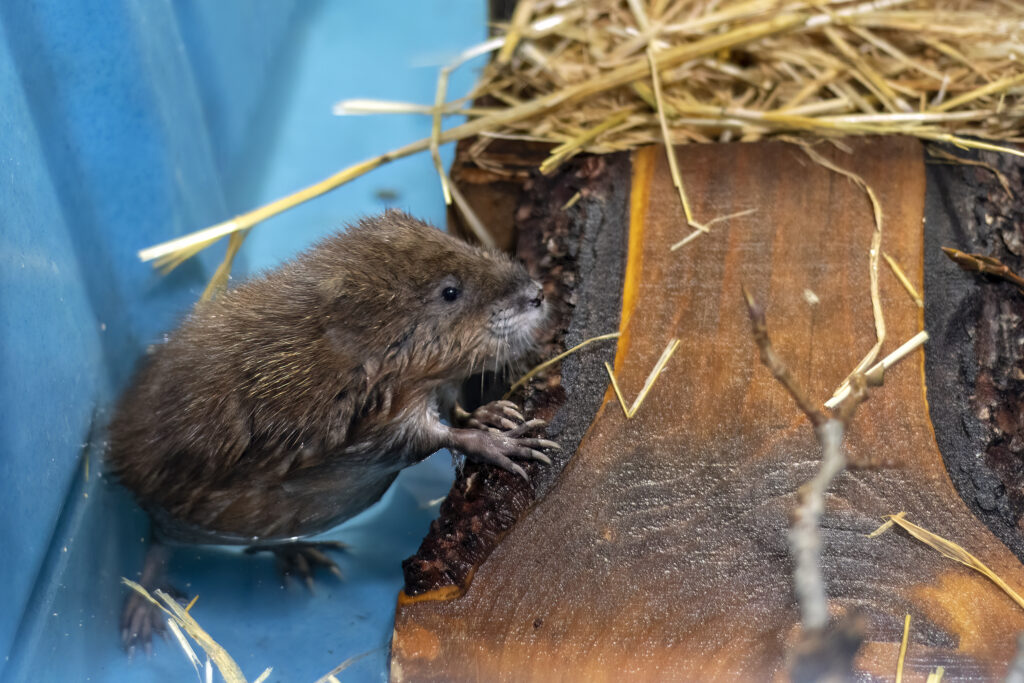
These territorial creatures employ secretions from glands on either side of their anus to create a distinct odor, marking out their space. The odor, particularly unpleasant when exposed to heat or mixed with other smells, plays a crucial role in portraying the muskrats’ territorial boundaries.4
The lifespan of muskrats is influenced by several factors, including their surroundings, diet, and the presence of predators. On average, muskrats live up to 3 or 4 years in the wild, while in captivity, they may extend their lifespan to around 8 years. The quality of their habitat plays a crucial role in determining muskrat lifespans. Well-maintained wetlands offer abundant food sources and some protection from predators, fostering conditions for muskrats to thrive and enjoy longer lives. Young muskrats, particularly vulnerable to predation, rely on access to natural shelters like burrows for essential survival during this stage.4
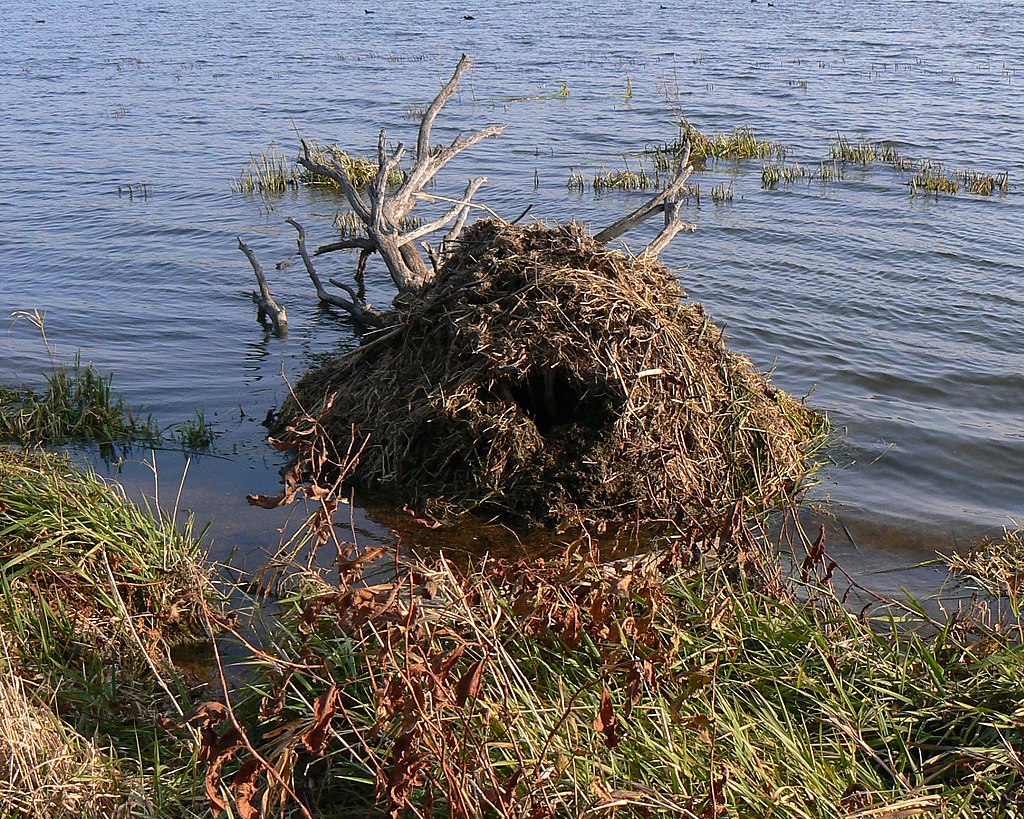
Muskrats are crucial to wetland ecosystems, contributing to water quality maintenance by consuming aquatic vegetation and controlling invasive species. Their lodges and burrows serve as habitat for various species, enhancing the overall biodiversity of wetland environments.1 Muskrats typically create burrows featuring two chambers – the upper one situated above the waterline and the lower one below, providing additional protection. These burrows are commonly filled with grasses or reeds. The primary entrance to these burrows is submerged, facilitating convenient entry and exit while aiding in their camouflage against predators. Muskrats often construct multiple burrows in a single area, ensuring that if one is inundated, they can swiftly transition to an alternative shelter.4
A “push-up” refers to a mound or clump of vegetation that muskrats construct in winter. These push-ups are created by muskrats pushing plant material, such as cattails and mud, through holes in the ice of frozen bodies of water. This action helps to maintain open water for the muskrats to access, allowing them to breathe and forage during the winter months.1
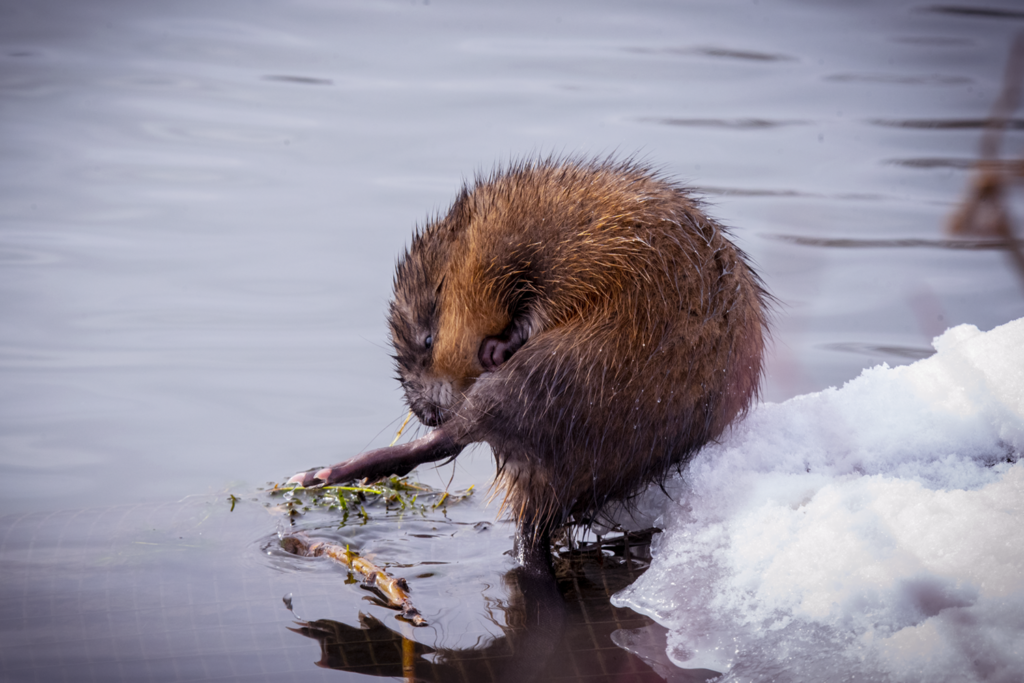
Muskrats encounter a range of challenges including habitat degradation, hunting for fur, and competition with other species. Coyotes, foxes, bobcats, and various birds of prey pose risks to muskrats. The exploitation of muskrats for their fur, utilized in diverse products, poses an additional threat. Diseases such as tularemia and leptospirosis can prove fatal to muskrats, intensifying the challenges they face in their natural environment.3
While generally harmless, muskrats can carry diseases such as giardiasis and rabies. Giardiasis, a bacterial infection transmitted through water, can cause serious digestive issues. Rabies, on the other hand, poses severe health risks to humans and requires immediate attention. Muskrats are also susceptible to diseases like tularemia and leptospirosis, emphasizing the importance of caution and awareness when encountering these creatures.5
Muskrats generally exhibit a tendency to flee when humans approach, and while they are not inherently harmful, intentional provocation may lead to defensive actions such as biting or scratching, posing a risk of injury.5 Should you encounter a muskrat, it is advisable to avoid interaction and simply let it be. If the muskrat appears injured or in distress, it is recommended to reach out to a wildlife rehabilitation center as these individuals possess the necessary expertise, training, and equipment to handle wild animals safely and carefully.3
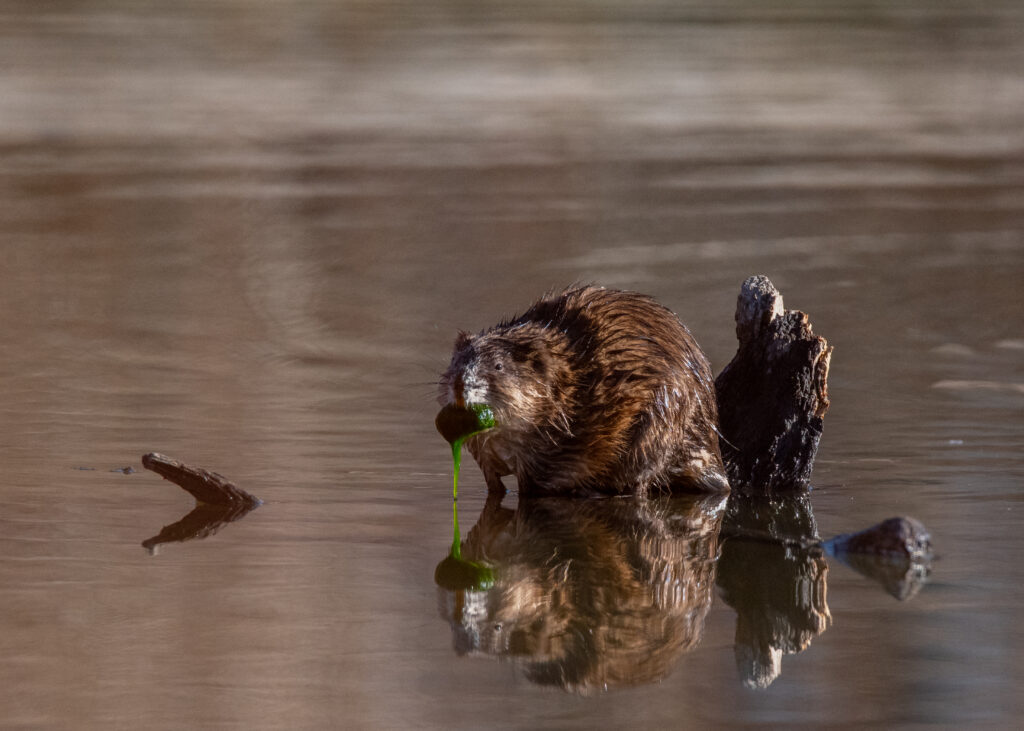
Muskrats, with their unique characteristics and ecological contributions, are more than just semi-aquatic rodents; they are nature’s engineers and guardians of wetland ecosystems. As we delve into their world, it becomes evident that understanding and conserving these creatures are integral to preserving the delicate balance of our natural environments. Protecting muskrats involves a combination of conservation efforts and responsible human behaviour including, but not limited to:
- Preserving wetland habitats
- Avoiding habitat destruction
- Keeping pets under control near wetland areas
- Raise awareness about the importance of muskrats in the ecosystem
- Report injured or orphaned muskrats
- Support conservation organizations
